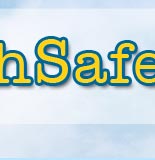 |
 |
 |
 |
 |
 |
|||||||||
Classroom Behavior Management The Needs of More Challenging Students The behavioral support needs of most the students in a typical class will be met by establishing a positive, welcoming environment with an effective system of rules and routines. For some of the students, however, this will not be enough support, and additional measures will be required. Follow the Law. An important element to remember about student behavior – whether appropriate or problem behavior – is that it always follows certain laws or principles. The two most critical laws for the teacher are:
The classroom is full of potential pay-offs for both problem behavior and desirable behavior. The teacher’s objective is to reduce the pay-offs for problem behavior and increase those for desirable behavior. The three most common pay-offs in the classroom are:
All of these consequences can follow and strengthen problem behavior or follow and strengthen desirable behavior. For example:
HELPFUL HINT: Repeated problem behavior is paying-off or serving a purpose in some way for the student. Ask yourself: “How can I arrange it so that the student gets the desired pay-off but not through problem behavior?” For example:
Most schools have a professional trained in Functional Behavior Assessment (FBA), usually the school psychologist or a special educator. This person can assist the teacher to discover the purpose or function of the problem behavior and to design a classroom intervention to address it. A full explanation of how to conduct a FBA can be found at the Center for Effective Collaboration and Practice - http://cecp.air.org/fba/. Attention, Please! Teacher attention is a very powerful tool in the hands of the skillful educator. Most students crave it. Effective teachers understand this and use it to best advantage for positive classroom management. When teachers are struggling with classroom management, it is often because too much of their attention is being directed toward suppressing problem behavior rather than toward increasing desirable behavior. Which behaviors the teacher chooses to attend to and which he/she chooses to ignore or punish are critical decisions.
Attention from peers for disruptive behavior can also be very powerful, especially as the students get older. This can be challenging for teachers to address if left to flourish.
Remember, the more the peers are successfully engaged in the classroom curriculum, the less likely they are to participate in disruptive behavior as an audience. HELPFUL HINT: Some students arrive at school from homes in which there was very little praise or attention provided to positive behavior. These students have learned that if you want any adult attention at all, you must misbehave. For these unfortunate students, negative teacher attention can be reinforcing, and verbal reprimands and classroom consequences seem only to fuel the misbehavior. In this circumstance, the teacher must creatively manufacture opportunities for the student to be successful, and then give them the gift of positive attention. Patience, understanding, and persistence are key; there may be a great deal to overcome. Keep ‘Em In Class! Effective classroom managers aim to address 95% of all behavioral problems through rules and consequences in the classroom. It’s when teachers are really struggling that the office referral slips start to come out and the lines begin to form in the principal’s office. Nationwide, the two most common results from a trip to the principal are a verbal tongue-lashing or a suspension, and neither has been demonstrated in the history of education research to have a positive effect on student behavior. Attempting to manage student behavior through fear of an office visit is destined to failure.
HELPFUL HINT: Behaviorally troubled students are not afraid of anything that a school can do to them, and thus fear of consequences is a poor management strategy. A much better approach is a firm, consistent, and predicable classroom augmented by additional positive behavioral supports, discussed here in the “An Ounce of Prevention” section. Remember also that the student who is engaged in the curriculum is much less likely to engage in problem behavior. Further discussion regarding increasing academic engaged time can be found at http://www.nwrel.org/request/oct00/textonly.html An Ounce of Prevention. Like the rest of us, students who exhibit high rates of disruptive behaviors tend to be creatures of habit. Day to day, pretty much the same things set them off – transitions between subject lessons, teacher compliance requests, unstructured time, independent seat work, peer interactions, and so on. Addressing the behavioral needs of these students is accomplished most effectively by efforts to prevent the problems before they arise by setting up positive behavioral supports (PBS). These classroom supports answer the question: “What additional guidance or structure does this student need in order to be successful in this activity?” The answer to this question may, at times, be obvious to the teacher, but at other times may require the eyes of a trained observer who can better determine the function or purpose of the problem behavior. Once that is decided upon, PBS can be set up to address the behavior. For example: Environmental Supports:
Incentive Supports
Peer Supports
HELPFUL HINT: The Training and Technical Assistance website at the College of William and Mary has numerous links with helpful positive behavioral support advice - http://www.wm.edu/ttac/links.html#9 . The Positive Behavior Support process is explained fully at www.pbis.org. Click on “High School PBS” for a comprehensive discussion of the use of positive supports with this age group.
|

This web site has been produced by The Melissa Institute for Violence Prevention and Treatment to provide research-based school violence prevention procedures for educators. The web site has been made possible with the generous support of the Robert and Renee Belfer Foundation and other supporters. |
 |
The Melissa Institute for Violence Prevention and Treatment to provide research-based school violence prevention procedures for educators Terms and Conditions |
|